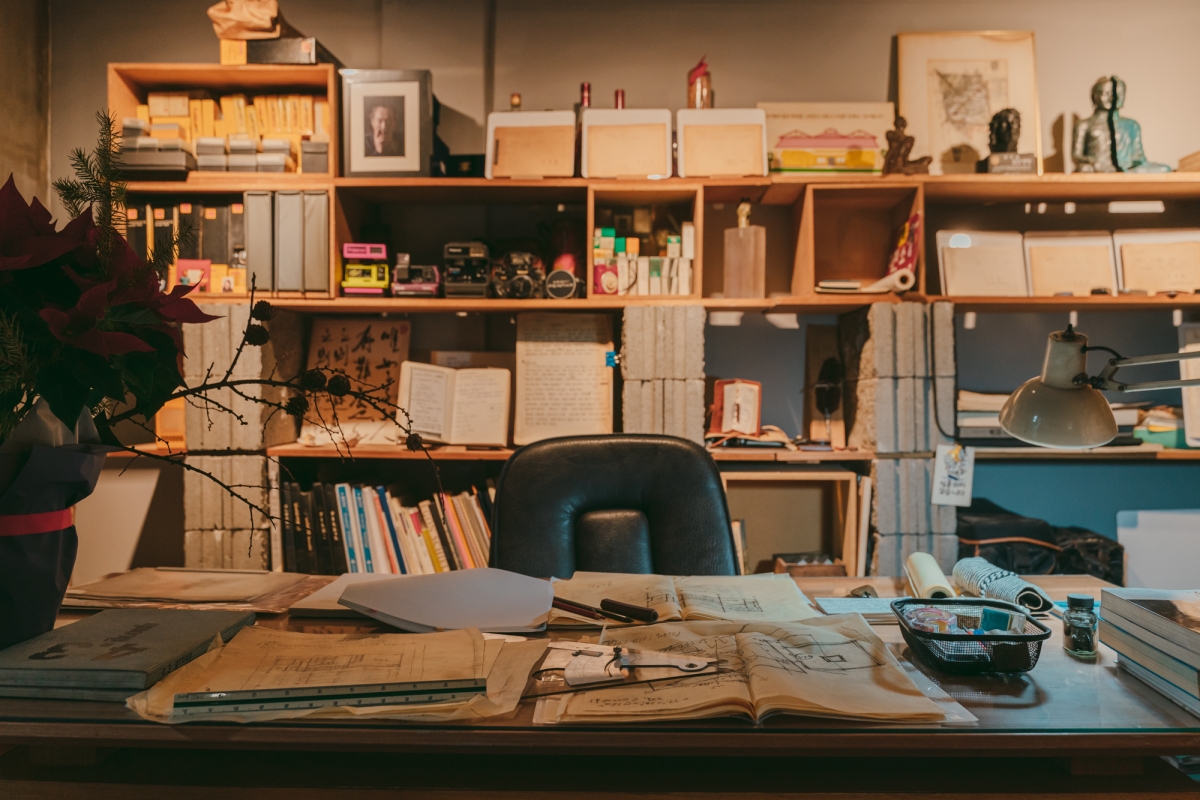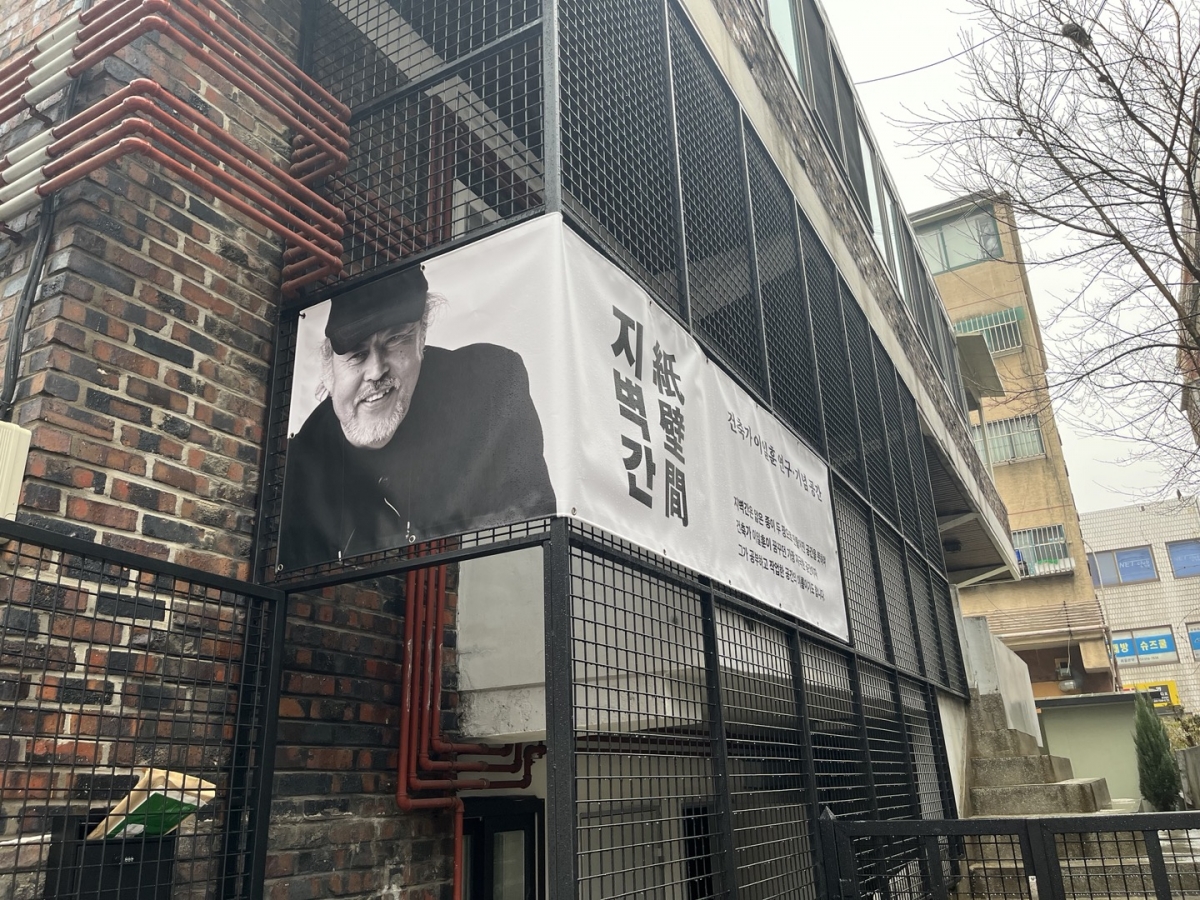SPACE Feburary 2023 (No. 663)
On Dec. 15, 2022, about a year and five months after the death of architect E Ilhoon (covered in SPACE, No. 646), E Ilhoon’s memorial exhibition space Jibuckgan opened in Sinwol-dong, Gangseo-gu. Jibuckgan, which was also the name of E Ilhoon’s studio, means a space made of two thin sheets of paper. He refers to Jibuckgan in an interview video from his lifetime: ‘The lightest, the deepest, the most profound. I haven’t been able to create such an architecture yet, but I repeat the name Jibuckgan to myself because of the desire to put everything between two sheets of paper.’ Jibuckgan, which was his wish, remained as the name of a memorial exhibition space, allowing him to pursue research and meetings on his architectural work. Jibuckgan consists of two floors and is partly remodeled from a row house where E Ilhoon lived for 35 years. While planning a space to commemorate E Ilhoon, his acquaintances discovered an empty two-story space under his house and agreed to set up a commemorative exhibition space there. Afterwards, Jibuckgan was established with the support and fundraising of friends, bereaved families, and seniors and juniors in the architectural world. On the first floor, a space reproducing the appearance of E Ilhoon’s studio and photographs of architectural work are displayed, and you can view the dictionaries and poetry books he enjoyed reading. On the second floor, there are architectural models and lights made by middle and high school students who took architecture classes, based on E Ilhoon’s work, The Study Room Next to the Railroad (1998). The students’ work resembles the exterior of The Study Room Next to the Railroad, which is rough and crude, so it fits the neighbourhood. On one side, you can also see books written by E Ilhoon, such as Between Things and People (2013) and The House in which I Wish to Live (2012), as well as the aforementioned interview video. Meanwhile, E Ilhoon graduated from the Department of Architecture at Hanyang University in 1978. After gaining practical experience at the Kim Chung-up Architecture Research Institute, he opened the E Ilhoon Studio for Free Media and developed the theory of ‘chae-dividing’ architecture from the early 1990s. ‘chae-dividing’ is a combination of ‘chae’, a unit for counting a house, and ‘sharing’, a noun form of share. His major works include Silence of Mercy Religious House (1994/2010 new building extension), the Study Room Next to the Railroad, the Chapel of St. Andrew’s Hospital of Clerical Congregation of the Blessed Korean Martyrs (2005), and Janseowanseokru (2007). by Park Jiyoun

©Lee Jungwoo

©Park Jiyoun




